Two hard days riding from Luang Prabang over mountainous jungle roads has brought me to Phonsovan in northern Laos. I had seen some photographs from the blog of a New Zealand couple that came through here and decided to take a look for myself. In fact, the area around here reminds me very much of NZ. The mountain road dropped fast into a valley that broadened out and quickly became a ribbon of tarmac through pleasant meadows and small lakes. I wan't sure up until this point whether I would make it to Phonsovan before dark but as the road continued to undulate instead of climbing again I decided to push on and just about made it before it got completely dark. It was a last minute dash into town with a Dutch couple on bikes that I had met twice previously that day. I met them when I stopped for breakfast at 9 am, then again about two hours later when they stopped for a second breakfast. I left them there and was surprised to pull up alongside them at the lights in town. They had decided to get the bus for the last 75 kilometres. I'm not sure how far they actually rode but it couldn't have been more than 25 kms.
The main attraction here is the plain of jars although our tour guide for the day made great pains to point out how good the trecking and rafting was too. No doubt he guides these also.
The main attraction here is the plain of jars although our tour guide for the day made great pains to point out how good the trecking and rafting was too. No doubt he guides these also.
Laos has the dubious honour of being the country that has been most heavily bombed while not being at war.
The US dropped bombs all along the eastern border of Laos in an attempt to destroy the supply line of the north Vietnamese army, who used the Ho Chi Minh trail that ran through dense jungle crossing the border between the two countries a number of times. It has been called the 'silent war', or 'secret war', as no-one seemed to mention it at the time (the part in Laos and Cambodia that is). I heard that there was a bomb dropped on Laos every 8 minutes of the war, which lasted for twenty years. Today there are huge parts or Laos that are not safe to venture into due to unexploded bombs. Work is ongoing to rid the menace of small cluster bombs that litter the ground all around the town. Just across the road from where I am writing this blog there is a UXO (unexploded ordinance) survivor information centre, where details are kept of all injuries suffered by those unfortunate enough to come into contact with the bombs. Last year alone there were about 30 reported injuries including loss of limbs and eyes, as well as fatalities, and most of them to children who were just playing in the fields their parents are farming. And this is 38 years after the war ended !
The plain of jars area was also a casualty of the bombing with up to 60 percent of the jars reportedly damaged. There are many jars left, although very little is known about them.
The US dropped bombs all along the eastern border of Laos in an attempt to destroy the supply line of the north Vietnamese army, who used the Ho Chi Minh trail that ran through dense jungle crossing the border between the two countries a number of times. It has been called the 'silent war', or 'secret war', as no-one seemed to mention it at the time (the part in Laos and Cambodia that is). I heard that there was a bomb dropped on Laos every 8 minutes of the war, which lasted for twenty years. Today there are huge parts or Laos that are not safe to venture into due to unexploded bombs. Work is ongoing to rid the menace of small cluster bombs that litter the ground all around the town. Just across the road from where I am writing this blog there is a UXO (unexploded ordinance) survivor information centre, where details are kept of all injuries suffered by those unfortunate enough to come into contact with the bombs. Last year alone there were about 30 reported injuries including loss of limbs and eyes, as well as fatalities, and most of them to children who were just playing in the fields their parents are farming. And this is 38 years after the war ended !
The plain of jars area was also a casualty of the bombing with up to 60 percent of the jars reportedly damaged. There are many jars left, although very little is known about them.
Theories about the origin and purpose of the jars ranges from giants from outer space (local tribal legend) to burial pots (Unesco), although no bones or human remains have ever been found in any of the jars. There are 85 jar sites dotted around the area with anywhere between 3 and 330 jars at each. The stone was quarried about ten to fifteen miles away and the jars were carried to there destination by elephants about 2500 years ago. It would seem that the plain of jars and Salisbury plain have something in common.
For more information regarding the plain of jars you can copy this link into your browserhttp://en.wikipedia.org/wiki/Plain_of_Jars

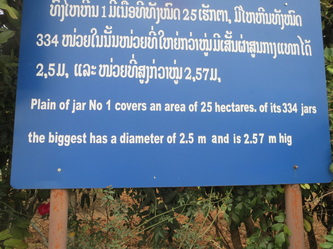
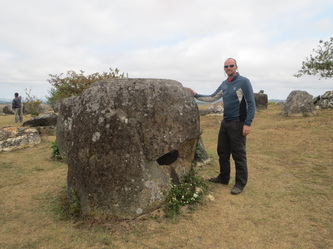
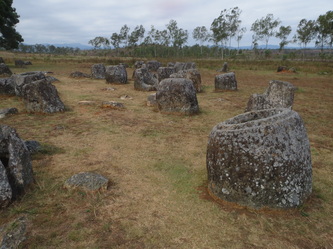
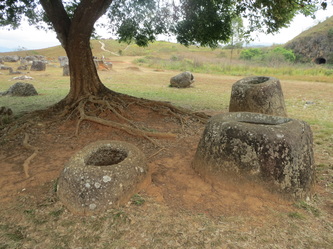
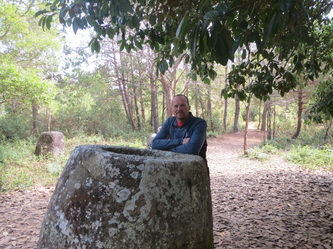

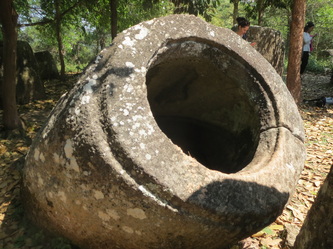
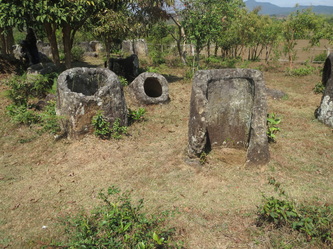
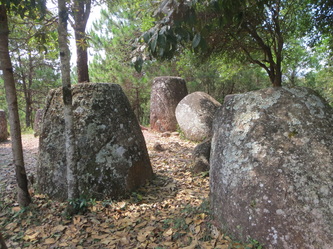
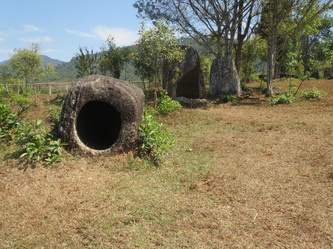
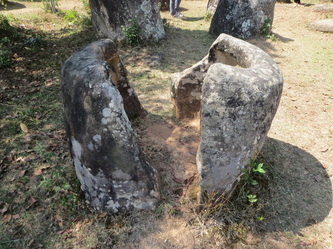
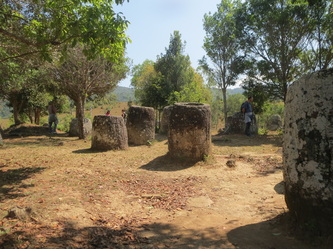

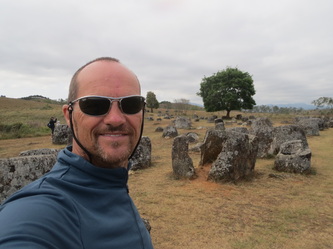
 RSS Feed
RSS Feed